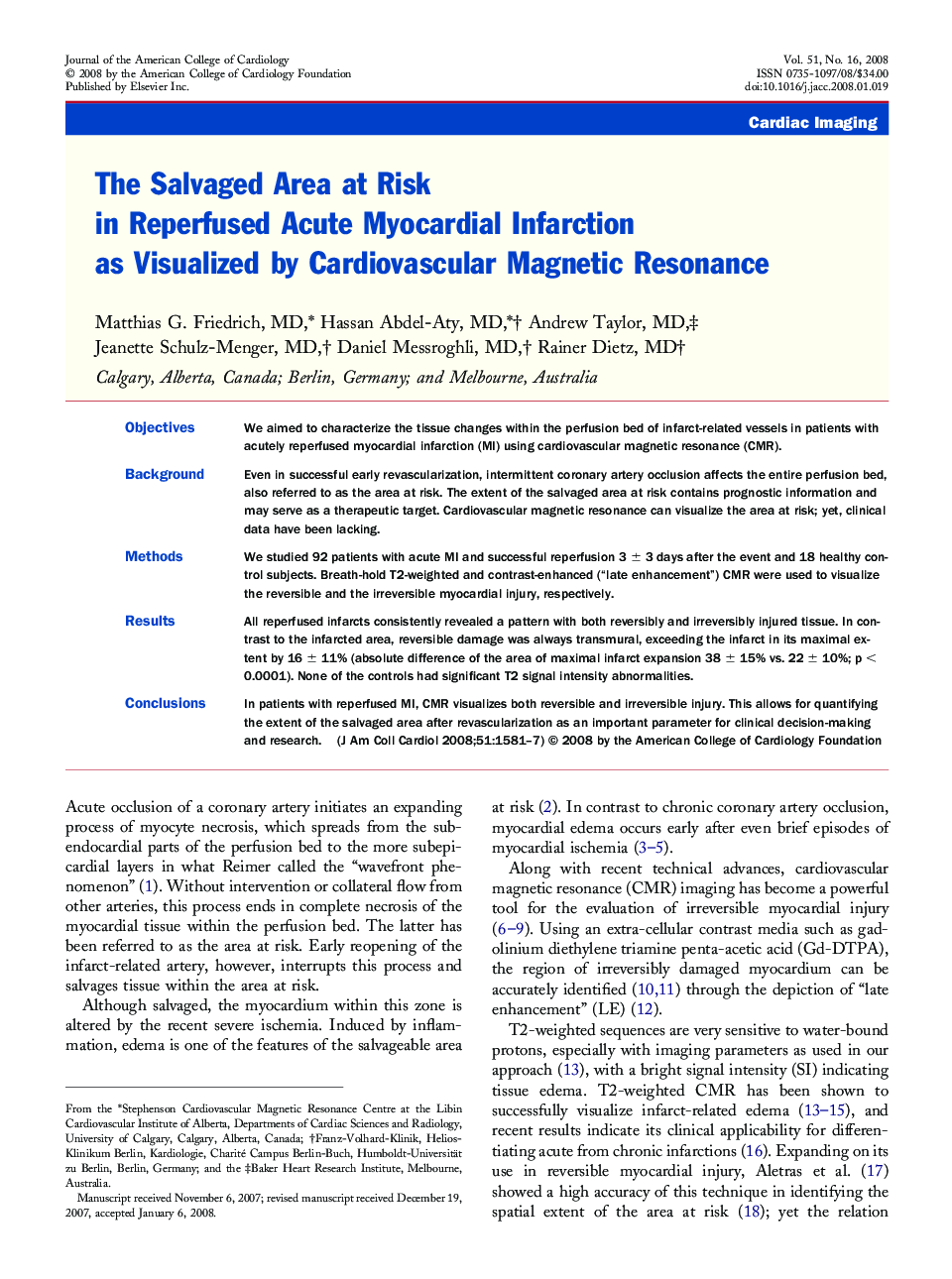| Article ID | Journal | Published Year | Pages | File Type |
|---|---|---|---|---|
| 2952383 | Journal of the American College of Cardiology | 2008 | 7 Pages |
ObjectivesWe aimed to characterize the tissue changes within the perfusion bed of infarct-related vessels in patients with acutely reperfused myocardial infarction (MI) using cardiovascular magnetic resonance (CMR).BackgroundEven in successful early revascularization, intermittent coronary artery occlusion affects the entire perfusion bed, also referred to as the area at risk. The extent of the salvaged area at risk contains prognostic information and may serve as a therapeutic target. Cardiovascular magnetic resonance can visualize the area at risk; yet, clinical data have been lacking.MethodsWe studied 92 patients with acute MI and successful reperfusion 3 ± 3 days after the event and 18 healthy control subjects. Breath-hold T2-weighted and contrast-enhanced (“late enhancement”) CMR were used to visualize the reversible and the irreversible myocardial injury, respectively.ResultsAll reperfused infarcts consistently revealed a pattern with both reversibly and irreversibly injured tissue. In contrast to the infarcted area, reversible damage was always transmural, exceeding the infarct in its maximal extent by 16 ± 11% (absolute difference of the area of maximal infarct expansion 38 ± 15% vs. 22 ± 10%; p < 0.0001). None of the controls had significant T2 signal intensity abnormalities.ConclusionsIn patients with reperfused MI, CMR visualizes both reversible and irreversible injury. This allows for quantifying the extent of the salvaged area after revascularization as an important parameter for clinical decision-making and research.
